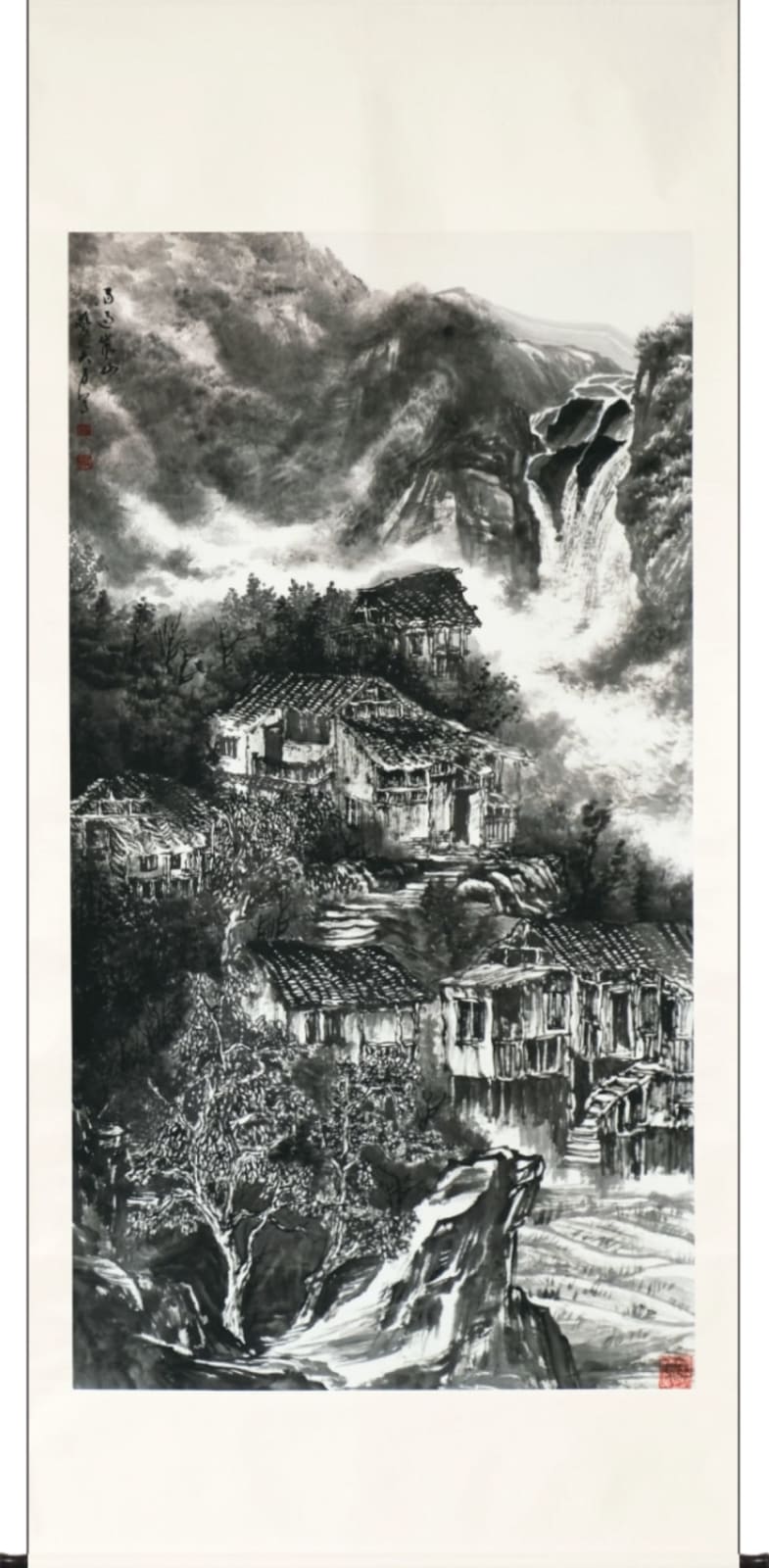Da Li
"Ethereal Mist over Lan Mountains: Shanshui Painting by Da Li", 2024
water ink on rice paper
H 176 * W 96cm
This Shanshui (山水) painting, titled 'Ethereal Mist over Lan Mountains' (裊裊嵐山), is a stunning creation by the acclaimed artist Da Li. The work masterfully captures the serene beauty of mountains...
This Shanshui (山水) painting, titled "Ethereal Mist over Lan Mountains" (裊裊嵐山), is a stunning creation by the acclaimed artist Da Li. The work masterfully captures the serene beauty of mountains shrouded in mist, with a harmonious interplay of bold ink tones and fine details. The painting’s poetic title evokes the tranquil and ethereal atmosphere of the scene, inviting viewers to immerse themselves in its meditative mood.
Da Li’s use of rich, dark ink to depict the grandeur of the mountains is contrasted by the light, misty brushwork that suggests the soft, flowing clouds. The detailed rendering of the village, nestled peacefully amidst the rugged landscape, adds an element of human warmth to the natural scenery. The composition is meticulously balanced, creating a sense of unity between the towering peaks, cascading waterfalls, and serene human dwellings.
The deliberate use of 留白 (negative space) enhances the depth of the painting, while the heavy ink strokes bring out the solidity and permanence of the mountains. The result is a work that is not only visually stunning but also deeply reflective of the Chinese artistic philosophy that seeks harmony between man and nature.
Symbolism and Meaning:
The title "裊裊嵐山" conveys the gentle, continuous rise of mist over the mountains, symbolizing the transient beauty of nature. The mountains represent strength and stability, while the mist signifies softness and change. Together, they embody the Taoist principle of balance and harmony between opposing forces, offering a visual metaphor for resilience and adaptability in life.
The inclusion of the village highlights the simplicity and humility of human existence, suggesting a harmonious coexistence with the natural world. The cascading waterfalls and flowing streams add vitality to the composition, symbolizing life’s ceaseless flow.
Da Li’s use of rich, dark ink to depict the grandeur of the mountains is contrasted by the light, misty brushwork that suggests the soft, flowing clouds. The detailed rendering of the village, nestled peacefully amidst the rugged landscape, adds an element of human warmth to the natural scenery. The composition is meticulously balanced, creating a sense of unity between the towering peaks, cascading waterfalls, and serene human dwellings.
The deliberate use of 留白 (negative space) enhances the depth of the painting, while the heavy ink strokes bring out the solidity and permanence of the mountains. The result is a work that is not only visually stunning but also deeply reflective of the Chinese artistic philosophy that seeks harmony between man and nature.
Symbolism and Meaning:
The title "裊裊嵐山" conveys the gentle, continuous rise of mist over the mountains, symbolizing the transient beauty of nature. The mountains represent strength and stability, while the mist signifies softness and change. Together, they embody the Taoist principle of balance and harmony between opposing forces, offering a visual metaphor for resilience and adaptability in life.
The inclusion of the village highlights the simplicity and humility of human existence, suggesting a harmonious coexistence with the natural world. The cascading waterfalls and flowing streams add vitality to the composition, symbolizing life’s ceaseless flow.
